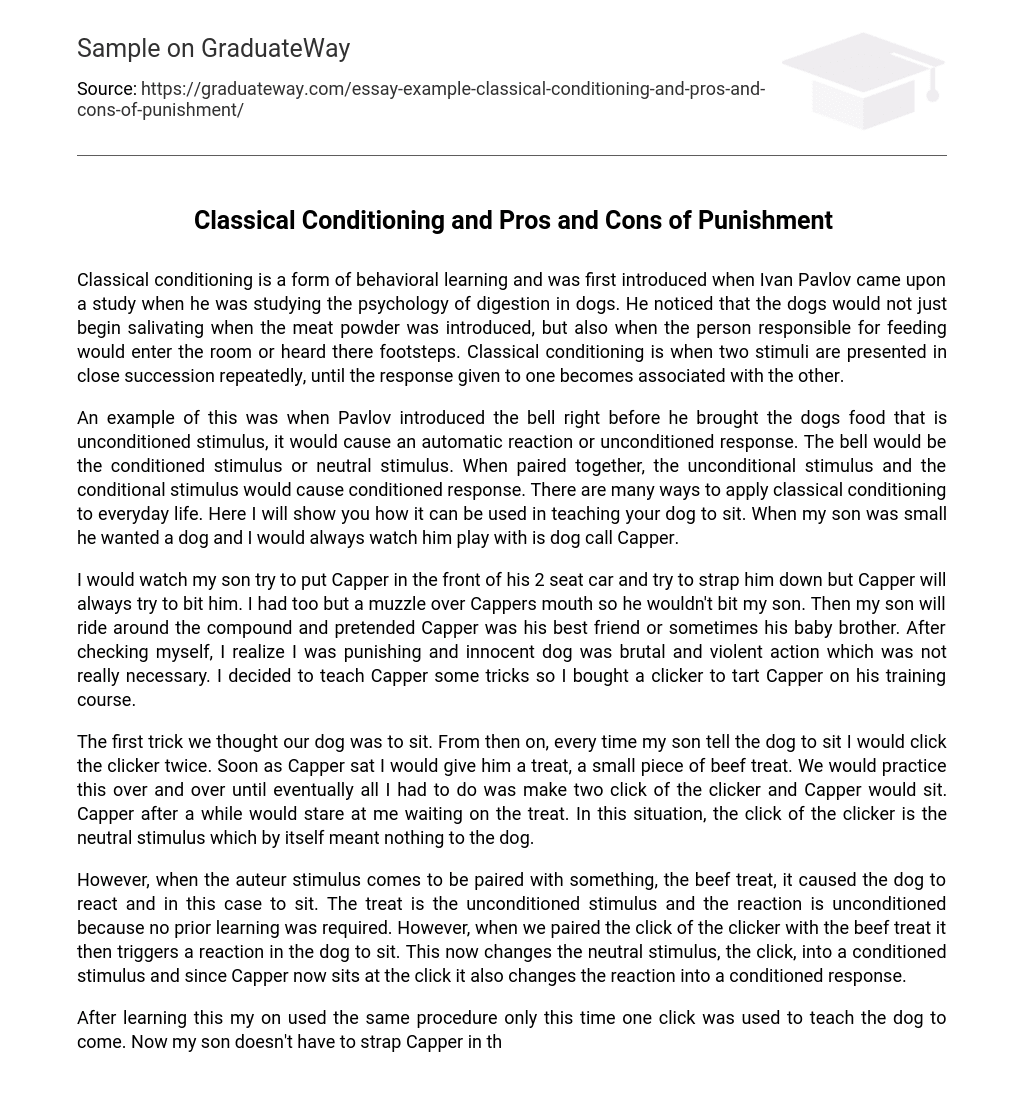Classical conditioning, a type of behavioral learning, was discovered by Ivan Pavlov during his investigation of digestion in dogs. He observed that the dogs not only salivated when exposed to the meat powder but also when they saw the person who fed them or heard their footsteps. This phenomenon occurs when two stimuli are consistently and repeatedly presented together, leading the response to one of the stimuli to become associated with the other.
When Pavlov introduced the bell before bringing the dogs food, which was the unconditioned stimulus, it would elicit an automatic reaction or unconditioned response. The bell would act as the conditioned stimulus or neutral stimulus. When they were paired together, the unconditioned stimulus and the conditioned stimulus would result in a conditioned response. Classical conditioning can be applied to everyday life in various ways, including teaching a dog to sit. I witnessed this when my son was young and desired a pet dog. I observed him playing with his dog named Capper.
Watching my son attempt to place Capper in the front of his two-seater car and secure him, only for Capper to resist and attempt to bite him, made me realize the need for a muzzle. I didn’t want Capper to harm my son. However, I later realized that punishing an innocent dog in such a brutal and violent way was unnecessary. Instead, I made the decision to teach Capper tricks and purchased a clicker to begin his training course.
The initial trick we taught our dog was to sit. Whenever my son commanded the dog to sit, I would use the clicker twice. Once Capper sat, I rewarded him with a small piece of beef treat. We repeated this practice until all it took was two clicks of the clicker for Capper to sit. Eventually, Capper would gaze at me, anticipating the treat. In this scenario, the click of the clicker served as a neutral stimulus that held no meaning for the dog by itself.
However, when the auteur stimulus is combined with the beef treat, it makes the dog react, making it sit in this specific case. The beef treat is considered as the unconditioned stimulus, and the reaction itself is unconditioned since no previous learning was needed. Nonetheless, once we associated the click of the clicker with the beef treat, it causes a reaction in the dog to sit. As a result, this transforms the neutral stimulus, which is the click, into a conditioned stimulus. Furthermore, since Capper now sits when the click occurs, it also turns the reaction into a conditioned response.
After learning this, my son used the same procedure, but this time only one click was used to teach the dog to come. Now, my son doesn’t have to strap Capper in the seat anymore. My son just has to sit in his car and Capper will run after the car, jump into it, and sit for himself. In conclusion, it is through Pavlov’s discovery of classical conditioning that one can understand how a person acquires involuntary reactions to a specific stimulus. Both animals and humans can be trained to react to certain activities in a specific manner.
Just as I taught my dog to sit using a clicker, this paper demonstrates the continued use of classical conditioning in our daily lives. In order to teach my dog the significance of the click, a treat is provided right after clicking. Once the dog grasps the positive consequences of the clicking sound, the clicker becomes a conditioned reinforcement. Now, Capper chases after my son even without hearing the click of the clicker, but simply upon hearing the wheels of his toy car.





